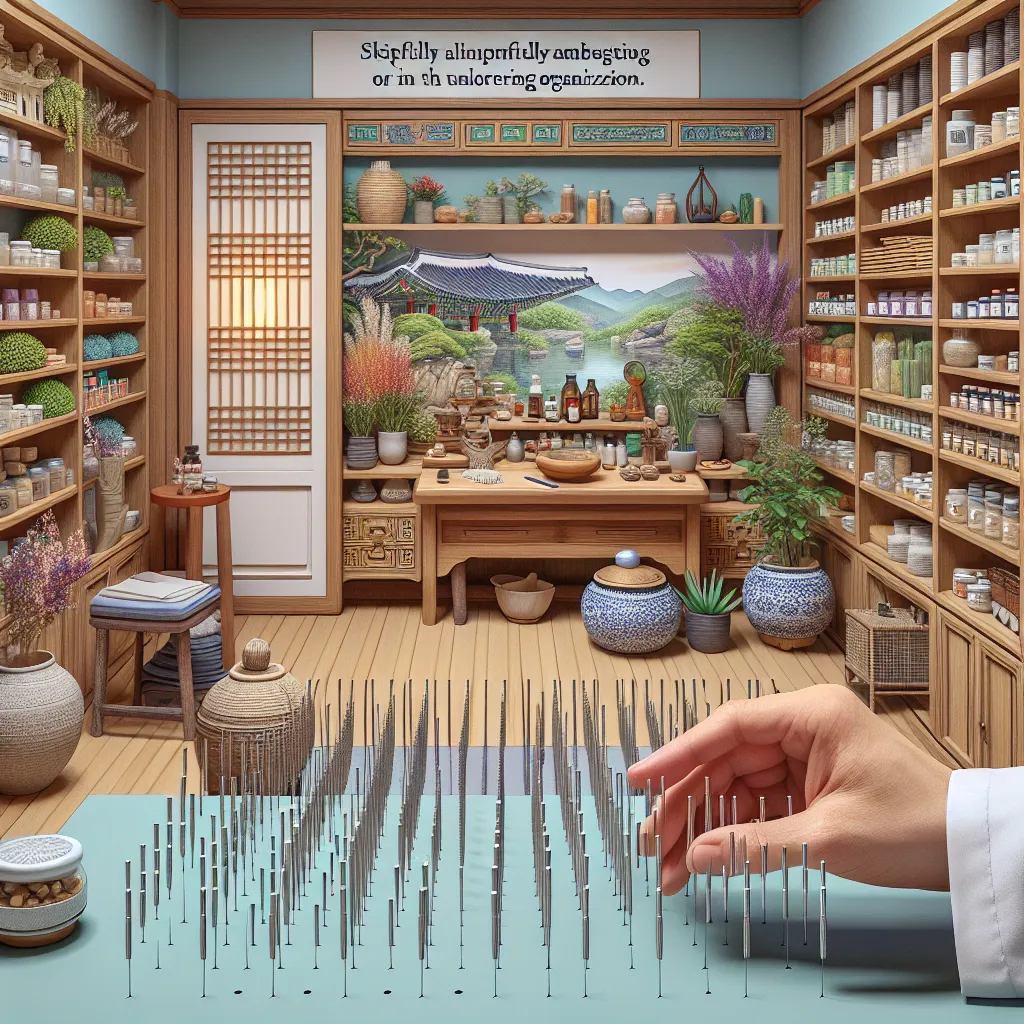Korean traditional medicine, with its deep-rooted history and holistic approach to health, has stood the test of time as a resilient healing practice. Throughout the centuries, it has incorporated a wide range of natural remedies, therapeutic techniques, and spiritual elements to promote well-being. The integration of Eastern and Western medicine has further enriched its practices, offering a comprehensive approach to healthcare that addresses the physical, mental, and emotional aspects of individuals. By embracing traditional Korean medicine, individuals can experience the benefits of holistic healing techniques that nurture the body, mind, and spirit in harmony. This unique approach not only treats ailments but also focuses on prevention and overall wellness, making it a valuable asset in today’s healthcare landscape.

The History of Korean Traditional Medicine
Korean Traditional Medicine, also known as Hanbang, has a rich history dating back over 2,000 years. This holistic approach to health and healing has been passed down through generations, blending elements of Chinese medicine, indigenous Korean practices, and modern scientific advancements. 🌿
Early Texts on Korean Traditional Medicine
One of the earliest recorded texts on Korean Traditional Medicine is the “Donguibogam,” written by the royal physician Heo Jun in the 17th century. This comprehensive medical encyclopedia covers a wide range of topics, from herbal medicine to acupuncture, and continues to be a foundational text in Korean medicine. 📚
Evolution of Korean Traditional Medicine
Throughout history, Korean Traditional Medicine has evolved and adapted to changing circumstances. During the Japanese occupation of Korea in the early 20th century, the practice of traditional medicine was suppressed. However, after Korea regained independence, there was a resurgence of interest in preserving and promoting these ancient healing techniques. 🇰🇷
Modern Recognition and Practice
In modern times, Korean Traditional Medicine has gained recognition for its effectiveness in treating a variety of health conditions. According to recent studies, herbal remedies used in Korean medicine have shown promising results in managing chronic pain, digestive disorders, and even mental health issues. 💊
Today, Korean Traditional Medicine is practiced alongside Western medicine in hospitals and clinics throughout South Korea. Patients have the option to receive integrated care, combining the best of both traditional and modern approaches to achieve optimal health outcomes. ☯️
Continued Role in Healthcare
The history of Korean Traditional Medicine is a testament to the resilience and adaptability of this ancient healing tradition. By embracing a holistic view of health and wellness, Korean medicine continues to play a vital role in promoting the well-being of individuals and communities. 🌟
As we look to the future, it is clear that Korean Traditional Medicine will remain a cornerstone of healthcare in Korea, offering a unique and comprehensive approach to healing that addresses the needs of the whole person. 🌸
Traditional Korean Medicine Practices
In the realm of healthcare, Traditional Korean Medicine (TKM) stands out for its holistic approach to health and wellness. With a history spanning thousands of years, TKM encompasses a wide range of practices aimed at treating the body and mind as a whole. From acupuncture to herbal medicine, moxibustion to cupping therapy, TKM offers a unique perspective on healing that focuses on restoring balance and harmony within the body.
Herbal Medicine in TKM
Herbal medicine, a cornerstone of TKM, utilizes a vast array of medicinal herbs to address various health concerns. The precise combination of herbs is tailored to each individual’s specific needs, taking into account factors such as constitution, symptoms, and lifestyle. This personalized approach sets TKM apart, emphasizing the importance of treating the root cause of an illness rather than just the symptoms.
Acupuncture in TKM
Acupuncture, another key component of TKM, involves the insertion of thin needles into specific points on the body to stimulate energy flow. By targeting these acupoints, practitioners aim to regulate the body’s qi, or vital energy, and promote healing from within. Acupuncture has been shown to be effective in managing pain, reducing stress, and improving overall well-being.
Moxibustion in TKM
Moxibustion, a technique that involves burning dried mugwort on or near the skin, is often used in conjunction with acupuncture to enhance its therapeutic effects. The heat generated during moxibustion helps to warm the body and stimulate circulation, making it particularly beneficial for conditions related to cold or stagnation.
Cupping Therapy in TKM
Cupping therapy, which involves placing cups on the skin to create suction, is used to promote blood flow, relieve muscle tension, and detoxify the body. The distinctive marks left by cupping may look intense, but they are a sign that the therapy is working to release blockages and restore balance.
In conclusion, Traditional Korean Medicine practices offer a comprehensive and time-tested approach to health and healing. By addressing the interconnectedness of the body, mind, and spirit, TKM provides a unique perspective on wellness that continues to resonate with individuals seeking a more holistic path to health. Embracing the wisdom of the past, TKM remains a resilient and valuable resource in today’s modern world.
Holistic Healing Techniques
In the realm of traditional Korean medicine, holistic healing techniques play a pivotal role in promoting overall well-being and restoring balance to the body. These techniques encompass a wide array of practices that target not only the physical symptoms but also the mental, emotional, and spiritual aspects of an individual. From acupuncture and herbal medicine to cupping therapy and moxibustion, Korean traditional medicine offers a comprehensive approach to health that has been honed over centuries.
Herbal Medicine: Hanbang
Herbal medicine, known as Hanbang, is a cornerstone of Korean traditional medicine. With a history dating back thousands of years, Hanbang utilizes various medicinal herbs to address a wide range of health issues. Each herb is carefully selected for its unique properties and combined to create powerful remedies that target specific ailments. From ginseng for energy and vitality to ginger for digestion and circulation, these natural ingredients form the basis of holistic healing in Korean medicine.
Acupuncture
Acupuncture is another key component of Korean traditional medicine, with a focus on restoring the flow of Qi, or vital energy, throughout the body. By inserting thin needles into specific acupuncture points, practitioners aim to rebalance the body’s energy and alleviate pain and discomfort. This ancient practice is not only effective for physical ailments but also for promoting mental clarity and emotional well-being.
Moxibustion
Moxibustion, a technique that involves burning dried mugwort on or near the skin, is often used in conjunction with acupuncture to enhance its therapeutic effects. The heat generated during moxibustion helps to stimulate circulation, reduce inflammation, and strengthen the immune system. This holistic approach to healing is deeply rooted in the belief that the body has the innate ability to heal itself when given the right support.
Cupping Therapy
Cupping therapy, which involves placing cups on the skin to create suction, is another traditional practice that is widely used in Korean medicine. This technique is believed to promote blood flow, relieve muscle tension, and detoxify the body. By drawing impurities to the surface of the skin, cupping therapy helps to restore balance and harmony within the body.
In conclusion, Korean traditional medicine’s holistic healing techniques offer a comprehensive and integrated approach to health that addresses the mind, body, and spirit. By combining ancient wisdom with modern science, these practices continue to provide effective solutions for a wide range of health conditions. Whether through herbal medicine, acupuncture, moxibustion, or cupping therapy, Korean traditional medicine remains a powerful tool for promoting wellness and vitality. 🌟
Integration of Eastern and Western Medicine
In the realm of healthcare, the integration of Eastern and Western medicine has been garnering increasing attention for its holistic approach to health. Korean Traditional Medicine (KTM) stands out as a prime example of this harmonious integration, blending the ancient wisdom of Eastern practices with the advancements of Western medical science. 🌿💉
Key Principles of Korean Traditional Medicine
One of the key principles of KTM is the concept of “Yin and Yang,” representing the balance of opposing forces in the body. This philosophy guides the diagnosis and treatment methods, aiming to restore harmony and equilibrium within the individual. By incorporating acupuncture, herbal medicine, and moxibustion, KTM addresses not only the symptoms but also the root causes of illnesses, promoting long-term wellness. 🌟🌱
Personalized Treatment Approach
Furthermore, the emphasis on personalized treatment in KTM aligns closely with the principles of Western medicine, where precision medicine and tailored therapies are gaining momentum. Through the integration of traditional Korean diagnostic techniques like pulse reading and tongue examination with modern diagnostic tools such as MRI and genetic testing, healthcare providers can offer more comprehensive and effective treatment plans for patients. 🔬👩⚕️
Research Studies and Efficacy
Moreover, research studies have shown promising results in the efficacy of combining Eastern and Western medicine approaches. For instance, a study published in the Journal of Integrative Medicine demonstrated the synergistic effects of using acupuncture alongside conventional cancer treatments, leading to improved quality of life and reduced side effects for patients. 📊🩺
In conclusion, the resilience of Korean Traditional Medicine lies in its ability to seamlessly integrate the best of both Eastern and Western medical practices, offering patients a holistic and personalized approach to health and well-being. By embracing this harmonious blend of traditions, we pave the way for a more comprehensive and effective healthcare system that addresses the diverse needs of individuals in today’s modern world. 🌏🌿
Korean traditional medicine, with its rich history and holistic approach to health, continues to thrive in the modern world. By incorporating traditional practices such as acupuncture, herbal medicine, and moxibustion, Korean medicine offers a unique perspective on healing that complements Western medical practices. The integration of Eastern and Western medicine allows for a more comprehensive and personalized approach to healthcare, addressing not only physical symptoms but also mental and emotional well-being. The resilience of Korean traditional medicine lies in its ability to adapt and evolve while staying true to its roots, providing patients with a balanced and effective way to achieve optimal health.
